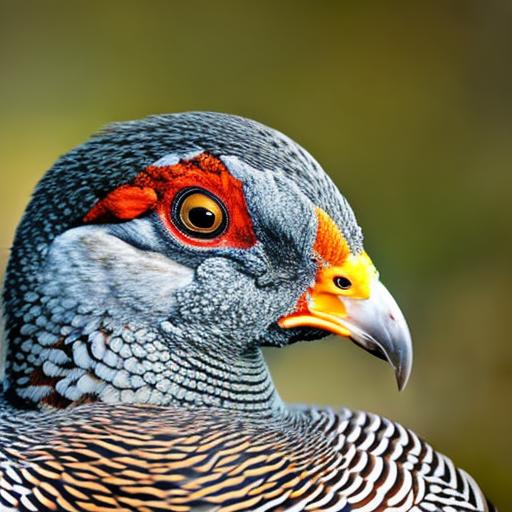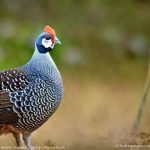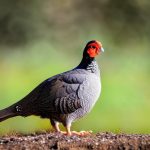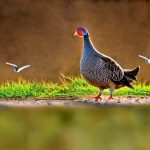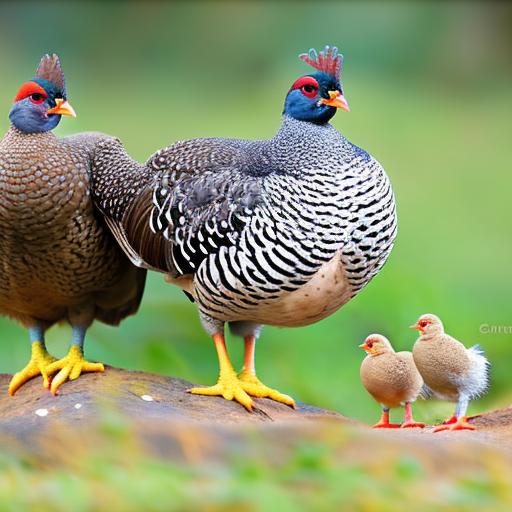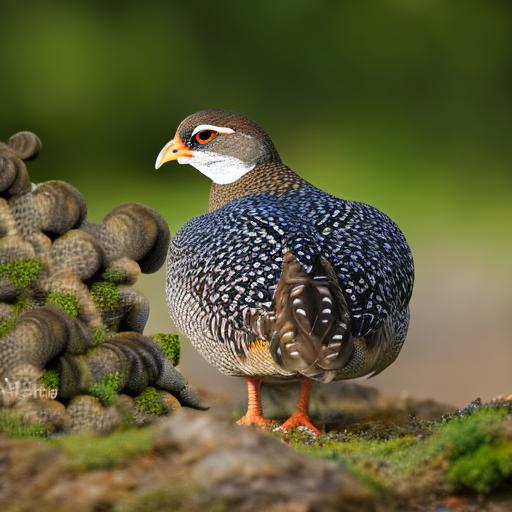Guinea fowl, like many other poultry, have specific needs during the winter months. Understanding these needs is crucial for ensuring the health and well-being of your flock. In winter, guinea fowl require shelter from the cold, protection from harsh weather conditions, and access to fresh water. They also need to be kept warm and comfortable to prevent frostbite and other cold-related health issues. Additionally, guinea fowl may require extra bedding and insulation in their coop to maintain a suitable environment during the colder months. It’s important to be aware of these needs and take appropriate measures to ensure that your guinea fowl are well-cared for during the winter season.
Guinea fowl are hardy birds, but they are still susceptible to the effects of cold weather. They have minimal feathering on their legs and feet, which makes them more vulnerable to frostbite. Additionally, guinea fowl are not as cold-tolerant as some other poultry species, so it’s important to provide them with adequate shelter and warmth during the winter. Understanding the specific needs of guinea fowl in winter will help you make informed decisions about their care and ensure that they remain healthy and comfortable during the colder months.
Key Takeaways
- Guinea fowl need protection from cold temperatures and wind in winter
- Providing a well-ventilated but draft-free shelter is essential for guinea fowl in winter
- Heating options such as heat lamps or heated perches can help keep guinea fowl warm in winter
- Insulating the coop with materials like straw or hay can help retain heat for guinea fowl
- Adding extra bedding such as straw or wood shavings can provide insulation and warmth for guinea fowl in winter
- Ensuring access to unfrozen water is crucial for the health of guinea fowl in winter
- Regularly monitoring the health and behavior of guinea fowl during winter is important for early detection of any issues
Providing appropriate shelter for guinea fowl
Providing appropriate shelter for guinea fowl is essential for their well-being during the winter months. A well-constructed coop or shelter will protect them from harsh weather conditions, keep them warm, and provide a safe and comfortable environment. When designing or choosing a shelter for your guinea fowl, consider factors such as size, ventilation, and protection from drafts. The coop should be spacious enough to accommodate the flock comfortably, with adequate ventilation to prevent moisture buildup and ammonia levels. It should also be well-insulated to retain heat and protect the birds from the cold.
In addition to size and ventilation, the coop should also provide protection from drafts and wind. Drafts can chill the birds and make them more susceptible to cold-related health issues. Ensure that the coop is well-sealed and free from drafts, but still provides adequate ventilation to maintain air quality. Consider adding windbreaks or barriers around the coop to further protect the birds from harsh winds. Providing appropriate shelter for guinea fowl in winter is crucial for their health and well-being, so take the time to assess your current setup and make any necessary adjustments to ensure that your flock is well-protected from the elements.
Using heating options for guinea fowl
Using heating options for guinea fowl can help keep them warm and comfortable during the winter months. While guinea fowl are generally hardy birds, they may still benefit from supplemental heat in extremely cold conditions. There are several heating options available for poultry coops, including heat lamps, radiant heaters, and heated perches. When using heating options for guinea fowl, it’s important to consider safety, energy efficiency, and the specific needs of the birds.
Heat lamps are a popular choice for providing supplemental heat in poultry coops. They emit radiant heat and can help maintain a comfortable temperature in the coop. However, it’s important to use heat lamps with caution, as they can pose a fire hazard if not properly installed and monitored. Radiant heaters are another option for providing warmth in the coop. These heaters are designed to emit infrared heat, which is absorbed by the birds and objects in the coop, helping to maintain a comfortable temperature. Heated perches are also available and can provide warmth directly to the birds’ feet, which can be especially beneficial for guinea fowl with minimal feathering on their legs.
When using heating options for guinea fowl, it’s important to monitor the temperature in the coop and ensure that it remains within a suitable range for the birds. Avoid overheating the coop, as this can lead to respiratory issues and other health problems. Additionally, be mindful of energy efficiency and safety when using heating options, and always follow manufacturer recommendations for installation and operation.
Insulating the coop for guinea fowl
Insulating the coop for guinea fowl is an effective way to retain heat and protect the birds from the cold during winter. Proper insulation can help maintain a comfortable temperature in the coop, reduce drafts, and prevent moisture buildup. There are several insulation options available for poultry coops, including foam board, fiberglass insulation, and reflective insulation. When insulating the coop for guinea fowl, it’s important to consider factors such as R-value, moisture resistance, and ease of installation.
Foam board insulation is a popular choice for poultry coops due to its high R-value and moisture resistance. It can be easily cut to size and installed on the walls and ceiling of the coop to provide effective insulation. Fiberglass insulation is another option for insulating the coop. It is available in batts or rolls and can be installed between wall studs and in the ceiling to help retain heat. Reflective insulation is also effective for reducing heat loss in the coop. It consists of a layer of reflective material sandwiched between layers of insulation, which helps reflect radiant heat back into the coop.
When insulating the coop for guinea fowl, it’s important to ensure that the insulation is properly installed and free from gaps or compression. This will help maximize its effectiveness and provide a comfortable environment for the birds. Additionally, consider adding weather-stripping around doors and windows to further reduce drafts and heat loss. Insulating the coop for guinea fowl is an important step in preparing for winter and ensuring that the birds remain warm and comfortable during the colder months.
Providing extra bedding for guinea fowl
Providing extra bedding for guinea fowl is essential for keeping them warm and comfortable during the winter months. Bedding helps insulate the coop floor, provides a soft surface for the birds to rest on, and absorbs moisture. There are several bedding options available for poultry coops, including straw, wood shavings, and shredded paper. When choosing bedding for guinea fowl, consider factors such as absorbency, cleanliness, and availability.
Straw is a popular choice for poultry bedding due to its insulating properties and availability. It provides a soft surface for the birds to walk on and helps retain heat in the coop. Wood shavings are another common bedding option for poultry coops. They are absorbent, easy to clean, and provide a comfortable surface for the birds. Shredded paper can also be used as bedding for guinea fowl. It is readily available and can be an economical option for providing extra insulation and comfort in the coop.
When providing extra bedding for guinea fowl, it’s important to regularly clean and replace soiled bedding to maintain a clean and healthy environment. Wet or soiled bedding can lead to ammonia buildup and respiratory issues in the birds. Additionally, consider adding extra bedding in nesting boxes to provide a warm and cozy space for egg-laying hens. Providing extra bedding for guinea fowl is an important part of winter care and will help ensure that the birds remain warm, comfortable, and healthy during the colder months.
Ensuring access to fresh water for guinea fowl in winter
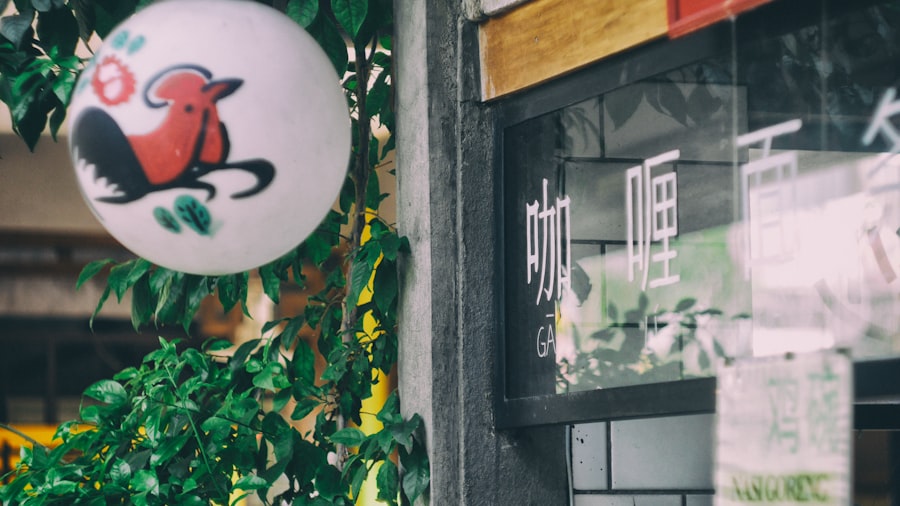
Ensuring access to fresh water for guinea fowl in winter is crucial for their health and well-being. Water is essential for hydration, digestion, temperature regulation, and overall health. During winter, it’s important to take extra precautions to prevent water from freezing and ensure that the birds have continuous access to clean water. There are several strategies for providing fresh water to guinea fowl in winter, including heated waterers, insulated water containers, and frequent water checks.
Heated waterers are a popular option for preventing water from freezing in poultry coops. These devices are equipped with a heating element that keeps water at a suitable temperature, preventing it from freezing in cold weather. Heated waterers come in various sizes and styles, including hanging or ground-based models. Insulated water containers are another effective way to prevent water from freezing in winter. These containers are designed with double-walled insulation to retain heat and keep water liquid in cold temperatures.
In addition to using heated or insulated water containers, it’s important to regularly check water sources throughout the day to ensure that they remain unfrozen. Consider adding multiple waterers throughout the coop to provide redundancy in case one freezes or malfunctions. Additionally, consider adding electrolytes or vitamins to the birds’ water to support their immune system during winter. Ensuring access to fresh water for guinea fowl in winter is essential for their health and well-being, so take proactive measures to prevent freezing and provide continuous access to clean water.
Monitoring the health of guinea fowl during winter
Monitoring the health of guinea fowl during winter is essential for identifying any potential issues early on and providing timely care. During colder months, guinea fowl may be more susceptible to respiratory issues, frostbite, dehydration, and other cold-related health problems. It’s important to regularly observe your flock for signs of illness or distress and take proactive measures to maintain their health and well-being.
When monitoring the health of guinea fowl during winter, pay attention to their behavior, appetite, appearance, and overall condition. Look for signs of lethargy, labored breathing, coughing or sneezing, reduced appetite, or changes in droppings. Additionally, check their feet for signs of frostbite or injury due to cold temperatures. Ensure that they have access to fresh water at all times and monitor their water consumption to prevent dehydration.
In addition to regular observations, consider scheduling periodic health checks with a veterinarian who is experienced with poultry care. A professional can provide guidance on preventive care measures, identify potential health issues early on, and recommend appropriate treatments if needed.
By understanding the specific needs of guinea fowl in winter and taking proactive measures to provide appropriate shelter, heating options, insulation, bedding, fresh water access, and health monitoring, you can ensure that your flock remains healthy and comfortable during the colder months. With proper care and attention to their needs, your guinea fowl can thrive even in winter conditions.
By understanding the specific needs of guinea fowl in winter and taking proactive measures to provide appropriate shelter, heating options, insulation, bedding, fresh water access, and health monitoring, you can ensure that your flock remains healthy and comfortable during the colder months. Guinea fowl are sensitive to cold temperatures and require a dry, draft-free shelter with adequate ventilation. Providing heating options such as heat lamps or heated perches can help keep them warm. Insulating the coop and providing plenty of bedding will also help to maintain a comfortable environment. It’s important to regularly check for signs of illness or injury, as well as ensuring that they have access to fresh water that isn’t frozen. With proper care and attention to their needs, your guinea fowl can thrive even in winter conditions.
When it comes to keeping guinea fowl warm in winter, it’s essential to provide them with a well-insulated coop. This article on Poultry Wizard offers valuable tips on how to ensure your poultry stays cozy during the colder months. From using straw bedding to sealing any drafts, these strategies can help protect your guinea fowl from the harsh winter weather and keep them healthy and comfortable.
FAQs
What are some ways to keep guinea fowl warm in winter?
Some ways to keep guinea fowl warm in winter include providing a well-insulated coop, using heat lamps or heated pads, and ensuring they have access to plenty of food and water.
What temperature is too cold for guinea fowl?
Guinea fowl can tolerate temperatures as low as 10°F (-12°C), but they may require additional warmth if temperatures drop below this.
Should I provide additional bedding for my guinea fowl in winter?
Yes, providing extra bedding such as straw or wood shavings can help insulate the coop and keep guinea fowl warm in winter.
Can guinea fowl get frostbite in winter?
Yes, guinea fowl are susceptible to frostbite, especially on their combs and wattles. It’s important to take measures to prevent frostbite, such as providing adequate warmth and ventilation in the coop.
Are there any specific dietary needs for guinea fowl in winter?
In winter, guinea fowl may require additional calories to maintain their body temperature. Providing a high-quality, high-protein feed can help meet their dietary needs during the colder months.
Meet Walter, the feathered-friend fanatic of Florida! Nestled in the sunshine state, Walter struts through life with his feathered companions, clucking his way to happiness. With a coop that’s fancier than a five-star hotel, he’s the Don Juan of the chicken world. When he’s not teaching his hens to do the cha-cha, you’ll find him in a heated debate with his prized rooster, Sir Clucks-a-Lot. Walter’s poultry passion is no yolk; he’s the sunny-side-up guy you never knew you needed in your flock of friends!

